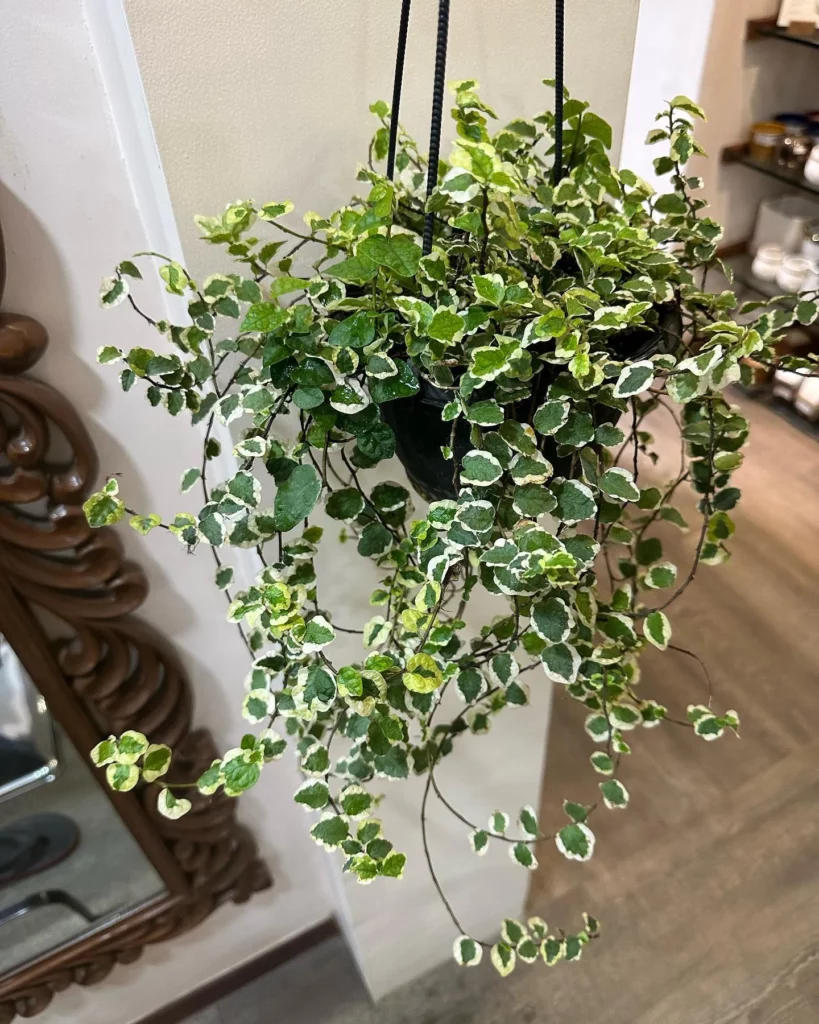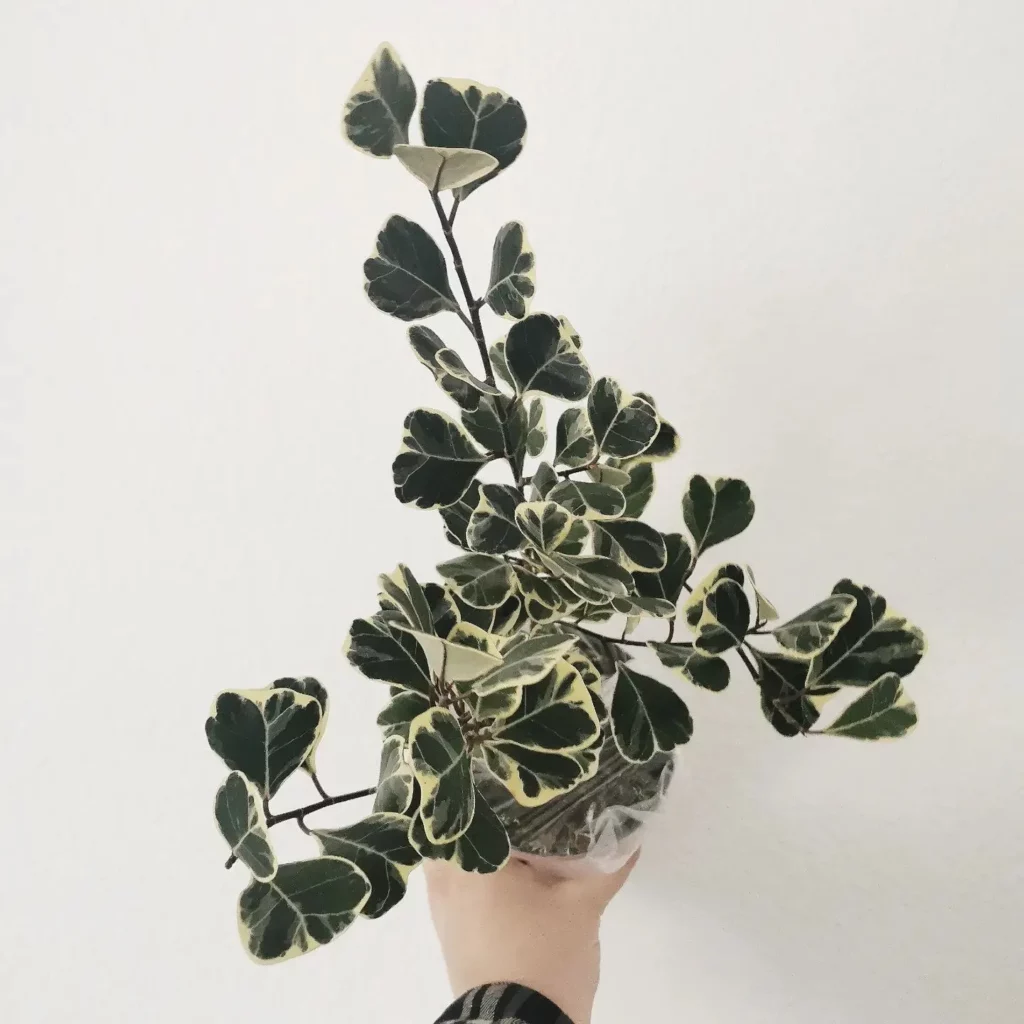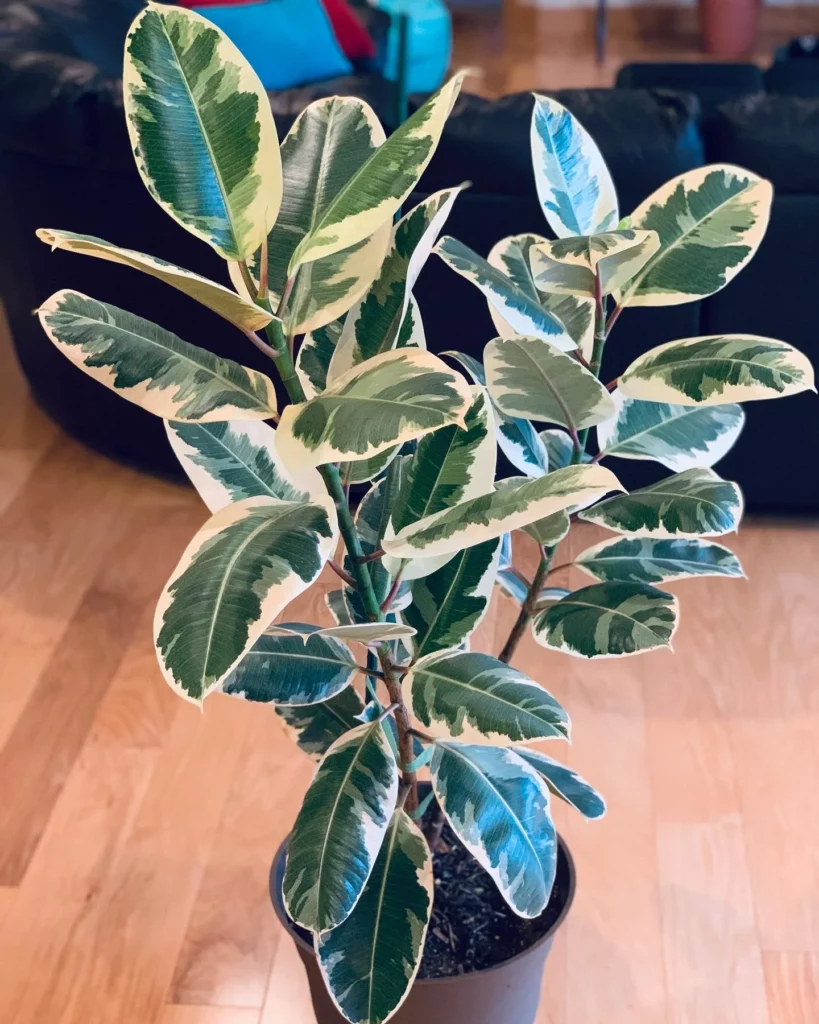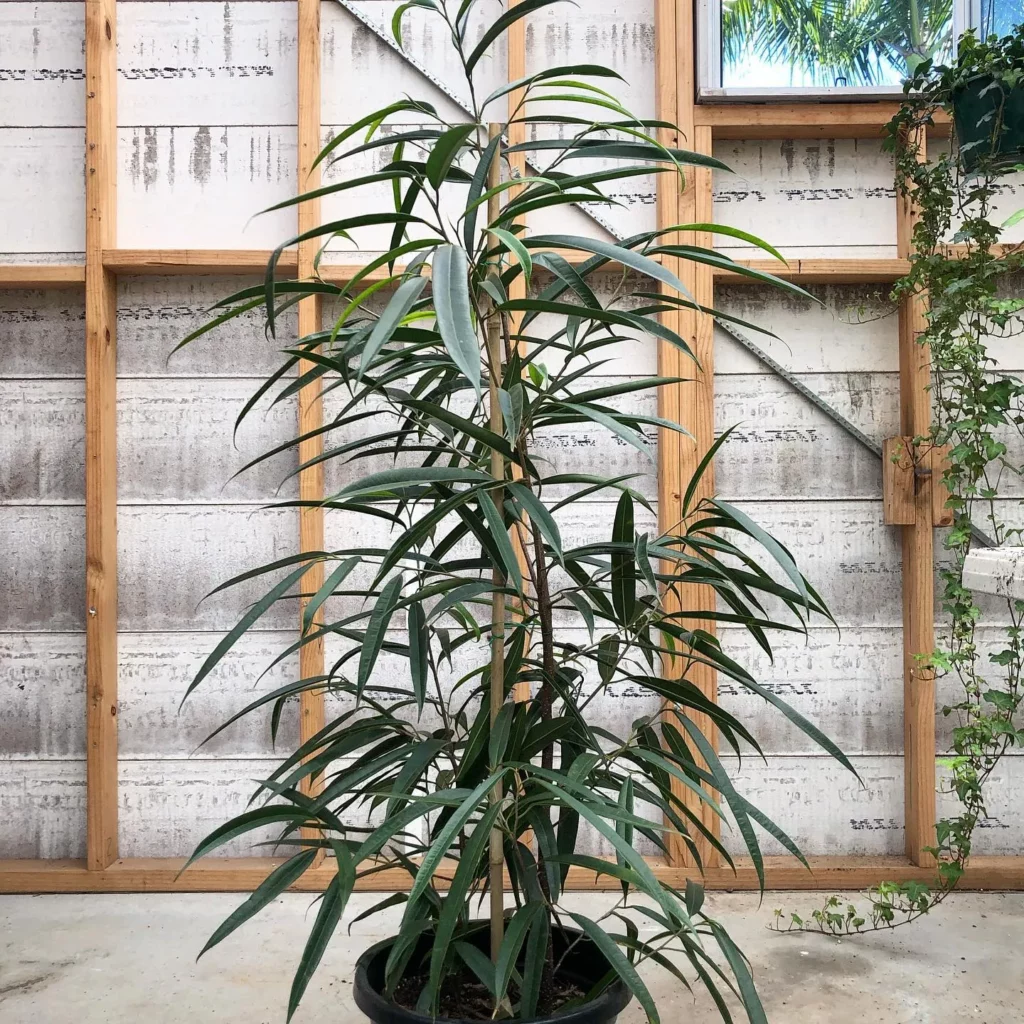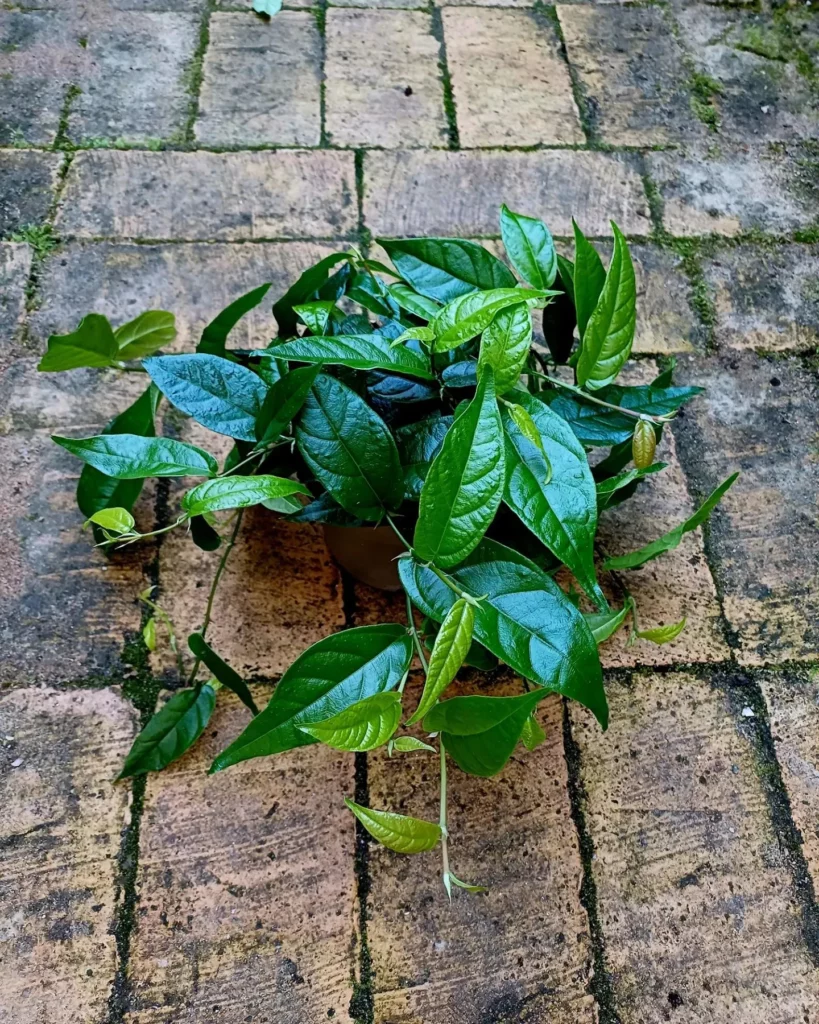The Ficus pumila Variegata is a visually striking plant with its delicate, heart-shaped leaves that showcase a beautiful, contrasting pattern of green and creamy white.
These variegated foliage adds a touch of elegance and uniqueness to any space. The plant has a vining growth habit, allowing it to cascade gracefully over the sides of containers or climb up walls with the help of its small, clinging aerial roots.
Appearance of Ficus pumila Variegata
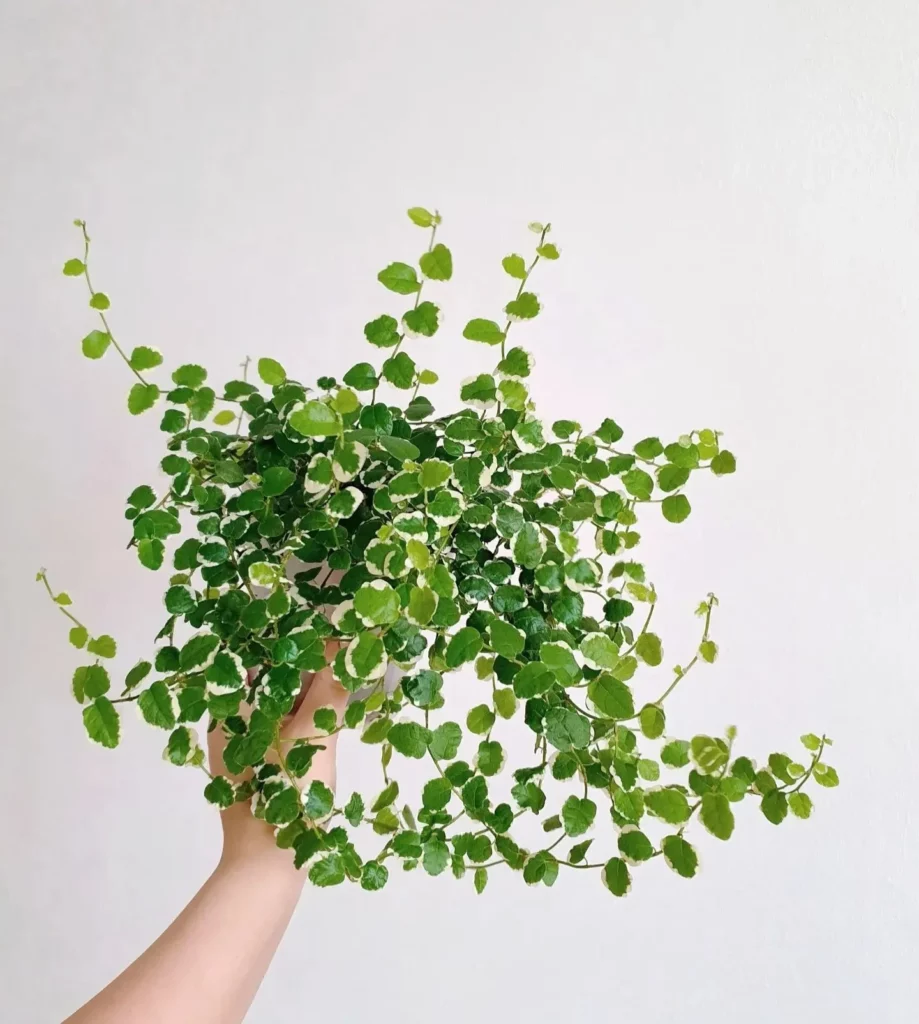
This variegated creeping fig is a versatile plant that can be grown in various settings. It is commonly used as an indoor houseplant, where it brings a touch of nature to any room.
It is also suitable for growing in terrariums, where its trailing growth creates a lush and tropical atmosphere. When planted outdoors in warmer climates, the Ficus pumila Variegata can be used to cover walls, arbors, or fences, adding a pop of color and texture to your garden.
With its delicate leaves and trailing growth, the Ficus pumila Variegata is a popular choice among plant enthusiasts and interior decorators alike. Whether displayed as a hanging plant, trained on a trellis, or left to cascade over a bookshelf, this plant is sure to make a statement with its vibrant foliage.
Varieties of Ficus pumila Variegata
| Variety | Leaf Color | Variegation Pattern |
|---|---|---|
| Standard | Green | Green and white |
| Snowflake | Green | White |
| Bulgaria | Yellow and green | Yellow and green |
How To Grow Ficus pumila Variegata

Growing Ficus pumila Variegata is a rewarding experience, and with the right care, you can enjoy its stunning foliage in your indoor or outdoor space. This section will guide you through the essential steps to ensure the healthy growth of your variegated creeping fig.
Light Requirements
Ficus pumila Variegata thrives in bright indirect light, making it an excellent choice for well-lit rooms or shaded areas in your garden. Place your plant near a window with filtered sunlight, avoiding direct exposure to harsh afternoon rays.
If grown outdoors, ensure it is protected from direct sunlight to prevent leaf burn.
Soil and Watering
Well-draining soil is crucial for the success of Ficus pumila Variegata. Use a mixture of potting soil, perlite, and peat moss to ensure adequate drainage. Water your plant thoroughly when the top inch of soil feels dry, allowing excess water to drain away.
Avoid overwatering, as it can lead to root rot. Check the moisture level regularly to maintain optimal soil conditions.
Temperature and Humidity
Ficus pumila Variegata prefers warm temperatures between 60°F and 75°F (15°C to 24°C). Protect your plant from cold drafts or extreme temperature fluctuations.
It also thrives in high humidity environments, so misting the leaves regularly or placing a humidifier nearby can help create the ideal conditions.
Pruning and Maintenance
Regular pruning is essential to control the growth of Ficus pumila Variegata. Trim back any unruly or excessive vines to maintain its desired shape. It is also important to remove any dead or yellowing leaves to promote healthy growth.
Additionally, periodically provide your plant with a balanced liquid fertilizer during the growing season to keep it nourished and vibrant.
Propagation Tips for Ficus pumila Variegata

Propagating Ficus pumila Variegata through stem cuttings is an excellent way to expand your collection or share this beautiful plant with others. Here are some propagation tips to help you successfully grow new variegated creeping fig plants:
- Select a healthy and mature Ficus pumila Variegata plant to take cuttings from. Look for stems that are firm and free from any signs of disease or damage.
- Using a clean and sharp pair of scissors or pruning shears, carefully cut a 4-6 inch stem from the parent plant. Make sure to cut just below a leaf node, as this is where new roots will form.
- Remove the lower leaves from the cutting, leaving only a couple of leaves at the top. This will reduce water loss and encourage root development.
- Dip the cut end of the stem in a rooting hormone powder to promote root growth. Shake off any excess powder.
- Prepare a well-draining potting mix using a combination of perlite, peat moss, and sand. Fill a small pot with the mixture and dampen it slightly.
- Make a small hole in the potting mix and insert the cutting, gently firming the soil around it to provide stability.
- Place the pot in a warm and bright location, away from direct sunlight. Mist the cutting regularly to maintain high humidity levels.
- Keep the potting mix slightly moist but avoid overwatering, as this can lead to rot. Check the moisture level by gently sticking your finger into the soil.
- Within a few weeks, you should start to see new roots forming. Once the roots are well established, you can transfer the young plant to a larger container or plant it directly in the ground.
Quick Care Overview for Ficus pumila Variegata
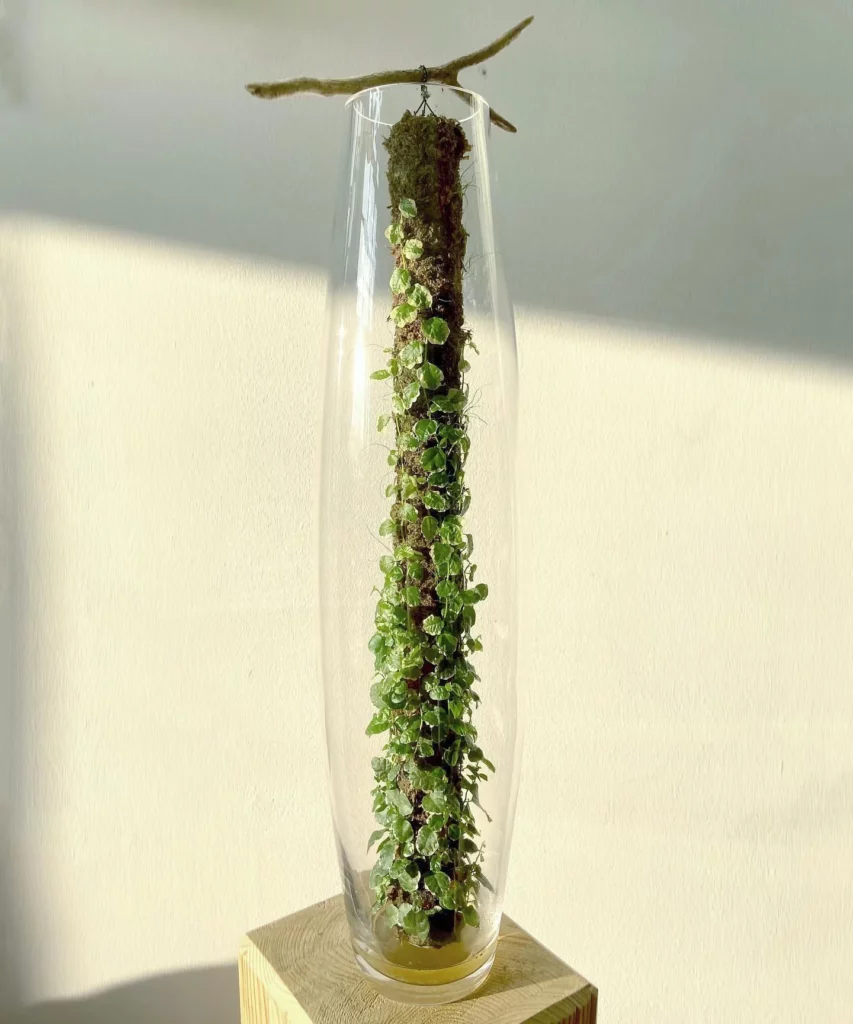
To ensure the optimal growth and well-being of your Ficus pumila Variegata, here is a quick care overview to keep in mind:
- Light Requirements: Creeping fig plants prefer bright indirect light. Place them near a window with filtered sunlight or provide artificial grow lights.
- Soil Requirements: Use a well-draining soil mix that retains moisture without becoming waterlogged. A combination of peat moss, perlite, and sand works well.
- Watering: Keep the soil evenly moist but not soggy. Water when the top inch of soil feels dry. Avoid overwatering, as it can lead to root rot.
- Humidity: Creeping figs thrive in humid environments. Increase humidity levels by misting the leaves with water or placing a humidity tray nearby.
- Temperature: Ficus pumila Variegata prefers temperatures between 60°F and 85°F (15°C-29°C). Protect it from drafts and extreme temperature fluctuations.
- Fertilizing: Feed your creeping fig with a balanced liquid fertilizer every month during the growing season (spring and summer).
- Pruning: Regular pruning helps maintain the desired shape and size of the plant. Trim back excessive growth or damaged leaves to promote healthy foliage.
- Pest Control: Monitor your plant for common pests like scale insects and spider mites. Treat infestations with organic insecticidal soap or horticultural oil.
Light Requirements for Ficus pumila Variegata
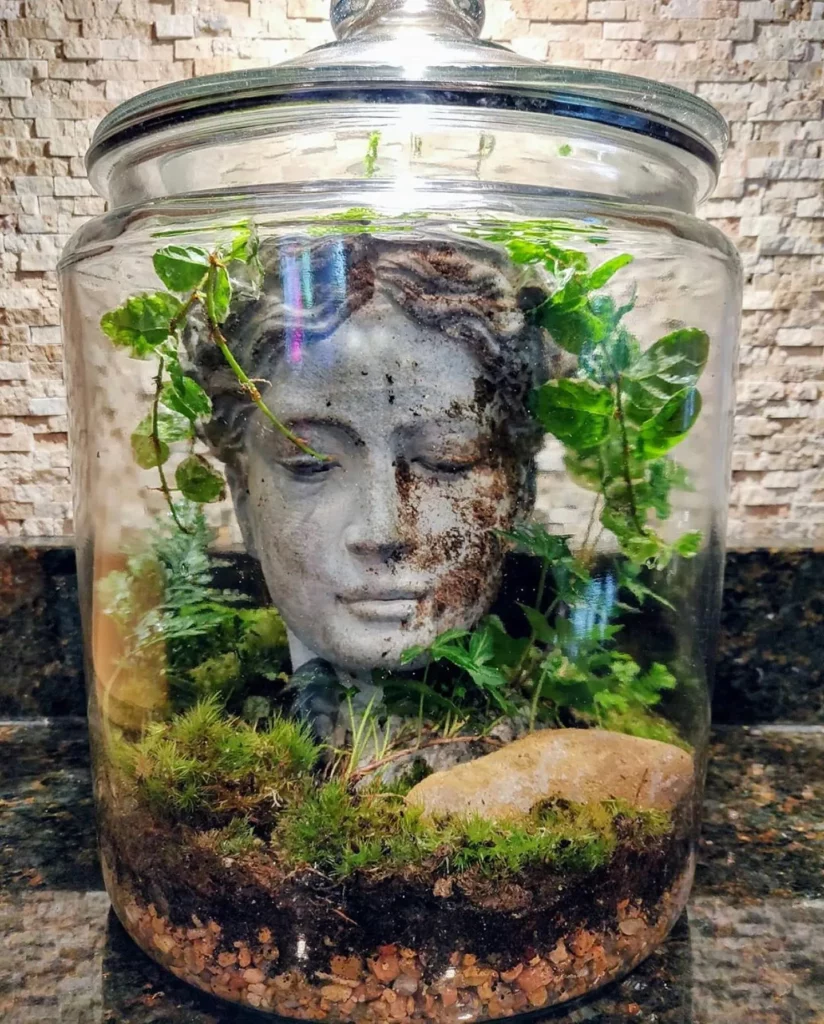
Providing the right amount of light is crucial for the healthy development of your Ficus pumila Variegata plant. This variegated creeping fig thrives in bright, indirect light. Placing it near a window with filtered sunlight is ideal.
Avoid exposing the plant to direct sunlight for extended periods, as it can lead to leaf burn.
To ensure optimal growth, rotate your Ficus pumila Variegata regularly to ensure even light distribution on all sides. This will prevent the plant from leaning towards the light source and encourage an even, balanced shape.
If you’re growing your variegated creeping fig indoors, be mindful of the light conditions in your home. In rooms with limited natural light, you can supplement with artificial grow lights.
LED grow lights are an excellent choice as they provide the right spectrum of light to support plant growth without generating excessive heat.
| Light Conditions | Suitability |
|---|---|
| Bright, indirect light | Preferred |
| Filtered sunlight | Ideal |
| Direct sunlight | Avoid for extended periods |
| Artificial grow lights | Supplementary option for low-light conditions |
Soil Requirements for Ficus pumila Variegata
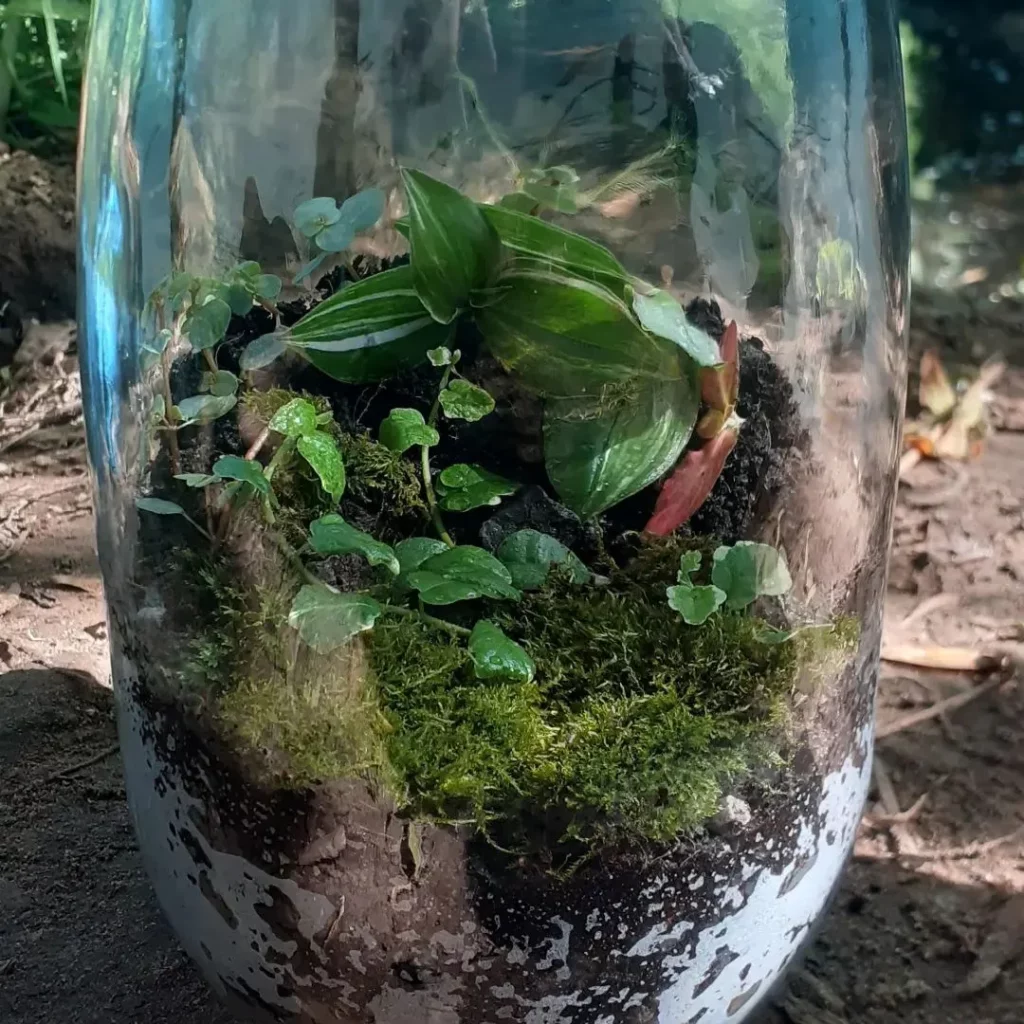
When choosing the soil type for your Variegated Ficus pumila, opt for a well-draining mixture that retains some moisture without becoming waterlogged.
A combination of peat moss, perlite, and coarse sand is ideal. This blend allows water to pass through easily while providing adequate moisture retention for the roots.
To ensure proper drainage, you can add a layer of small rocks or broken clay pots at the bottom of the planting container. This will prevent water from pooling at the roots, which can lead to root rot. Good drainage is crucial for the health of your Ficus pumila Variegata.
In addition to providing well-draining soil, it’s important to consider the pH level. Ficus pumila Variegata plants prefer a slightly acidic to neutral pH range of 6.0 to 7.0. You can test the pH of your soil using a soil testing kit, available at most garden centers.
Potting and Repotting Ficus pumila Variegata

Proper potting and repotting techniques are crucial for the overall health and growth of your Ficus pumila Variegata. This beautiful vining plant, also known as creeping fig, requires a well-draining potting mix that allows excess water to escape, preventing root rot and other moisture-related issues.
When potting your Ficus pumila Variegata, choose a container that is slightly larger than its current one, providing room for root expansion. Using a pot with drainage holes is essential to prevent waterlogging.
To begin, line the bottom of the pot with a layer of small rocks or pebbles. This will aid in drainage and prevent the roots from sitting in water.
Next, fill the pot with a well-balanced potting mix that consists of equal parts peat moss, perlite, and a quality indoor plant soil. Ensure the soil is thoroughly moistened before planting.
Repotting Ficus pumila Variegata
As your Ficus pumila Variegata grows, it will eventually outgrow its current pot. Repotting should be done annually in the late spring or early summer when the plant is actively growing.
Gently remove the plant from its current pot, being careful not to damage the roots. Inspect the roots and remove any dead or rotting sections. If the roots are tightly bound, gently tease them apart to encourage new growth.
Place a layer of fresh potting mix in the bottom of the new, slightly larger pot. Position the Ficus pumila Variegata in the center and fill in around the roots with additional soil.
Be sure to leave about an inch of space between the soil surface and the top of the pot to allow for watering. Lightly press down the soil to secure the plant and water thoroughly.
Pruning and Shaping Ficus pumila Variegata
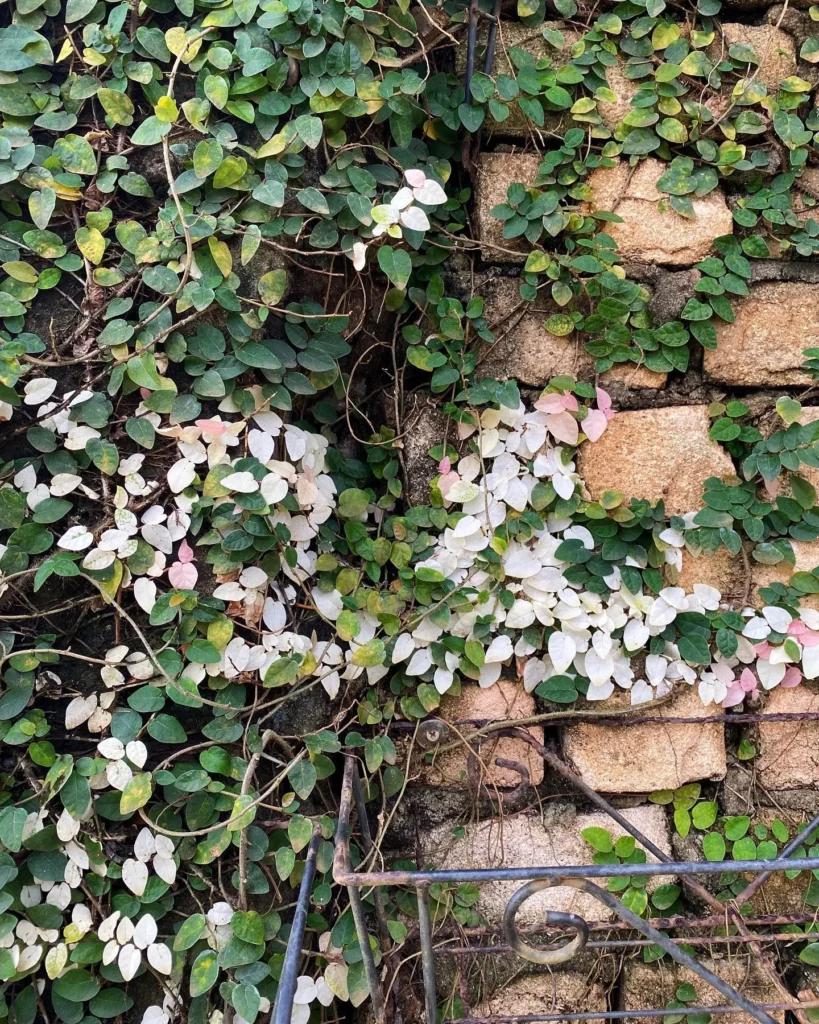
Pruning and shaping your Ficus pumila Variegata is essential for maintaining its desired size, shape, and overall appearance. By following proper pruning techniques, you can help your plant to grow lush and full, while keeping it in check.
When pruning, start by removing any dead, damaged, or yellowing leaves or vines. Use sharp, clean pruning shears to make clean cuts just above a leaf node. This will encourage new growth and prevent the plant from becoming too leggy or unruly.
To shape your Ficus pumila Variegata, guide the vines in the direction you desire by gently training them along a trellis or support structure. You can also prune back the longer branches to maintain a more compact appearance. Regular pruning will help the plant maintain its desired shape and prevent it from overgrowing its space.
Tips for Pruning and Shaping Ficus pumila Variegata:
- Prune regularly to remove dead or damaged foliage and to control the size and shape of the plant.
- Trim back long branches to maintain a compact appearance and encourage new growth along the vines.
- Guide the vines along a trellis or support structure to achieve your desired shape.
- Use clean, sharp pruning shears to make clean cuts just above a leaf node.
- Consider wearing gloves when pruning to protect your hands from the plant’s sap, which may cause skin irritation.
Temperature Requirements for Ficus pumila Variegata
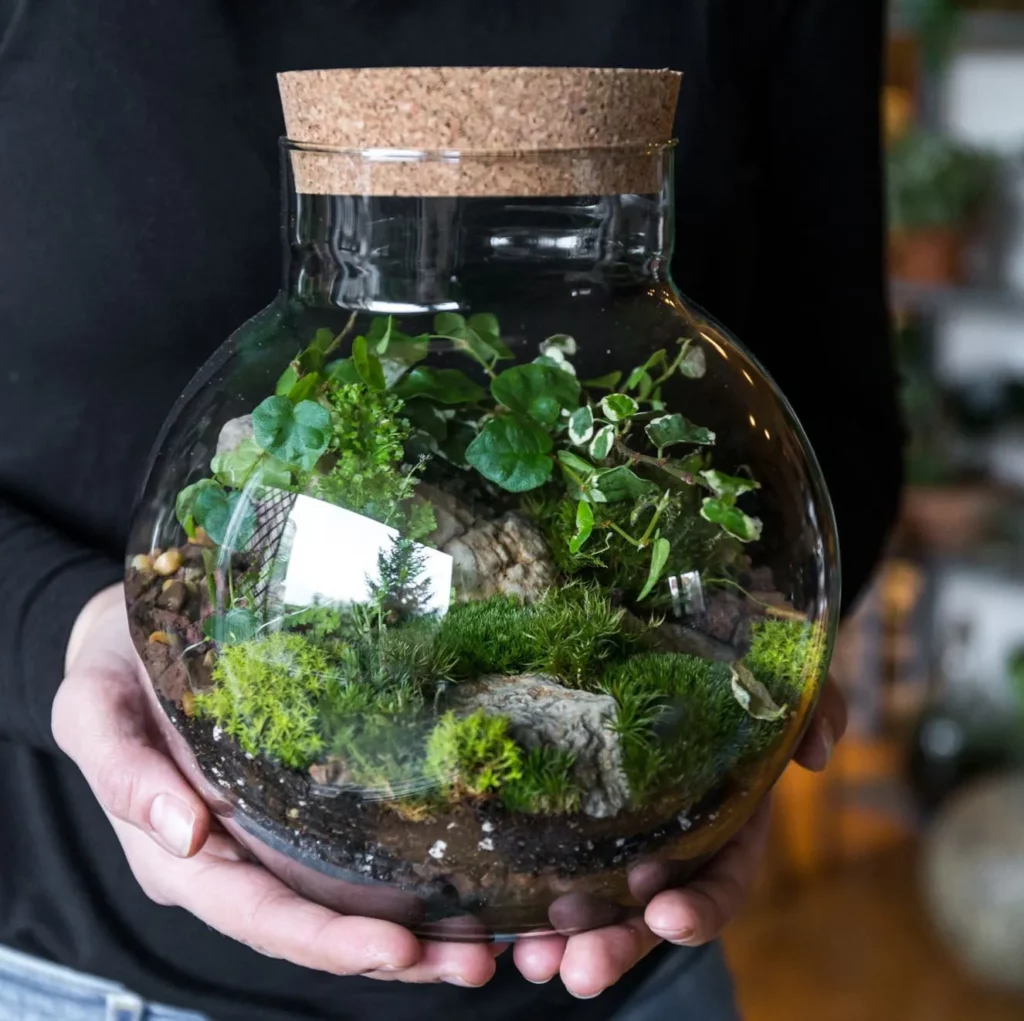
Providing the right temperature conditions is vital for the optimal growth and health of your Ficus pumila Variegata. This variegated creeping fig prefers warm temperatures ranging from 65°F to 85°F (18°C to 29°C) and should be protected from extreme cold and heat.
During the summer months, it is best to keep your Ficus pumila Variegata in a temperature range between 70°F to 80°F (21°C to 27°C). If the temperatures rise significantly, consider providing some shade or moving the plant to a cooler location to prevent leaf burn or stress.
In winter, when indoor heating can lead to dry air, it is important to maintain a stable temperature for your Ficus pumila Variegata. Avoid exposing the plant to drafts or sudden temperature changes. Ideally, keep it in an area where the temperature remains around 60°F to 70°F (15°C to 21°C) during the colder months.
Humidity Requirements for Ficus pumila Variegata
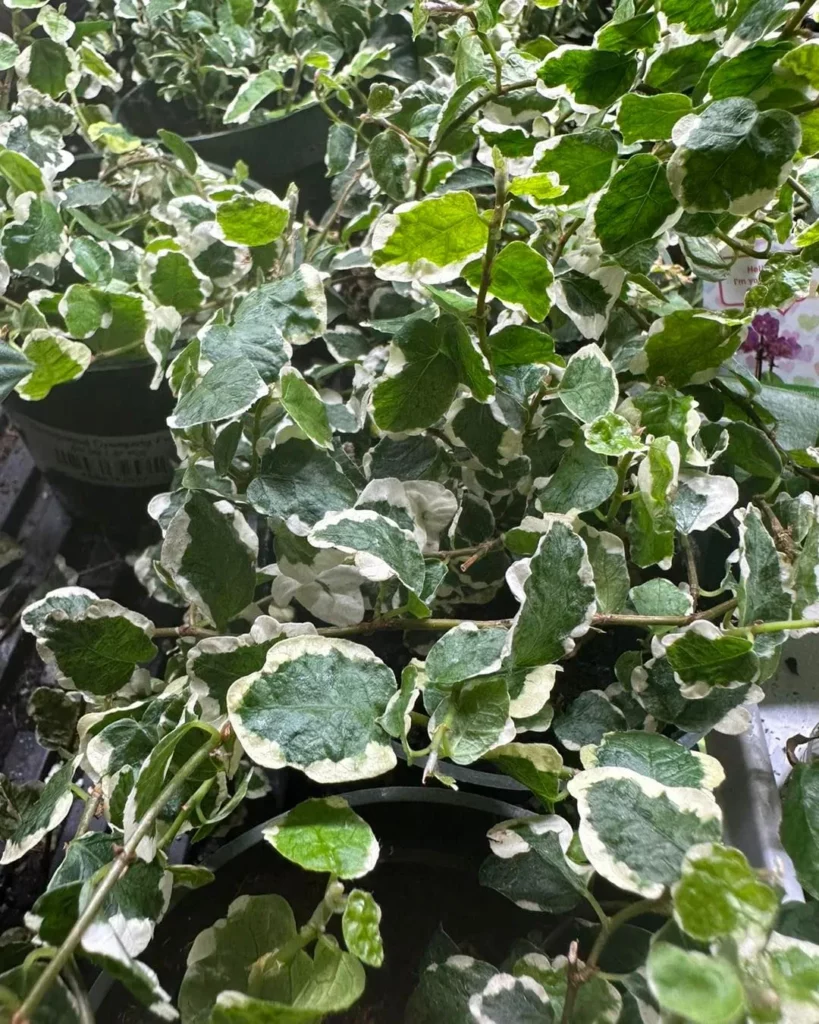
Creating a suitable humidity environment is key to keeping your Ficus pumila Variegata healthy and vibrant. This beautiful variegated creeping fig thrives in warm, humid conditions, resembling its natural habitat in tropical regions.
Providing adequate humidity levels not only ensures the plant’s wellbeing but also enhances its growth and appearance.
To maintain the ideal humidity for your Ficus pumila Variegata, you can employ several strategies. One effective method is to use a humidifier, especially during drier seasons or in areas with low humidity.
By increasing the moisture in the air, you can create a microclimate that mimics the plant’s native environment.
Another approach is to regularly mist the foliage of your Ficus pumila Variegata. Fill a spray bottle with room temperature water and gently mist the leaves, being careful not to saturate the soil.
This helps to hydrate the plant and maintain optimal humidity levels. Additionally, placing a shallow tray filled with water near the plant can create a humid micro-environment, as the water evaporates and increases moisture in the air.
Watering and Fertilizing Ficus pumila Variegata
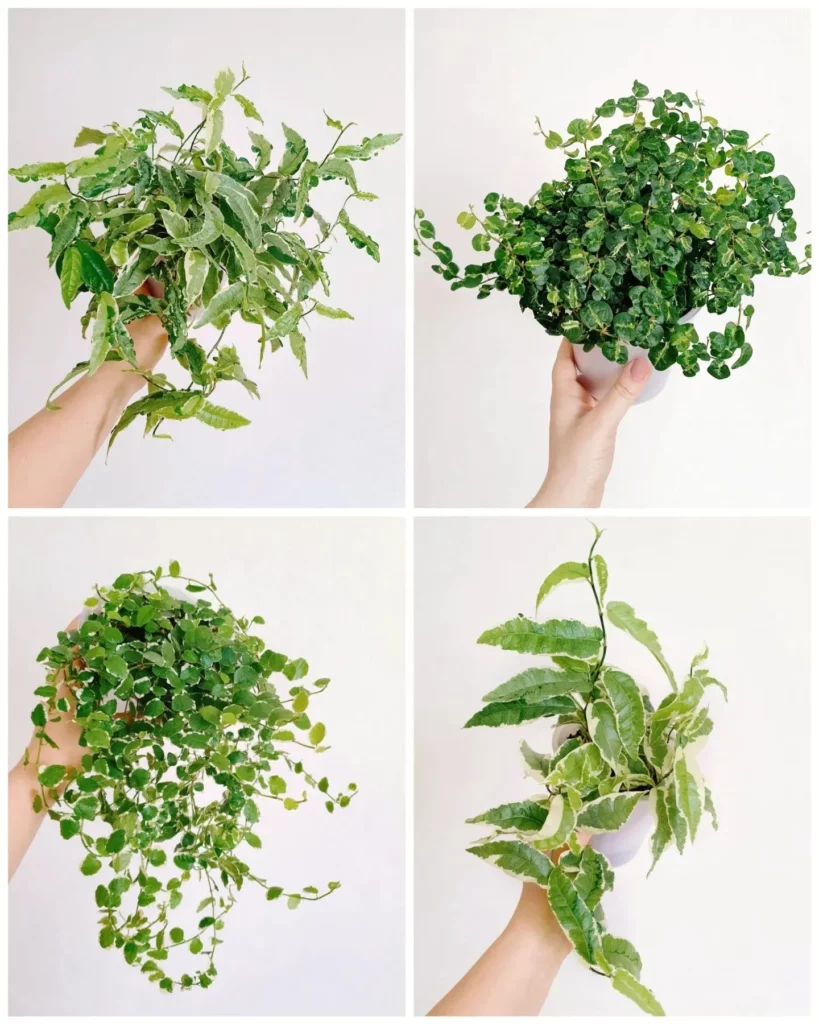
Proper watering and regular fertilization are essential for the overall well-being and vitality of your Ficus pumila Variegata. To ensure the optimal growth and health of your plant, it is important to understand its specific watering needs and fertilization requirements.
| Watering Tips for Ficus pumila Variegata |
|---|
| Use room temperature water to avoid shock to the plant. |
| Avoid overwatering by ensuring the pot has proper drainage holes. |
| Water more frequently during the growing season and reduce frequency during the dormant period. |
In terms of fertilization, providing your Variegated Ficus pumila with regular nutrients will help promote healthy growth and vibrant foliage. Use a balanced, water-soluble fertilizer designed for houseplants and follow the instructions on the packaging for proper dilution and application.
During the active growing season, which is typically spring and summer, fertilize your Ficus pumila Variegata once a month. Be sure to water the plant thoroughly before applying the fertilizer to prevent the roots from burning.
| Fertilization Tips for Ficus pumila Variegata |
|---|
| Choose a fertilizer with a balanced NPK ratio (nitrogen, phosphorus, and potassium). |
| Follow the recommended dosage provided by the fertilizer manufacturer. |
| Avoid overfertilization, as this can lead to nutrient burn and damage the plant. |
Pest Control and Common Problems for Ficus pumila Variegata
Despite its resilience, Ficus pumila Variegata can encounter a few common pests and problems that require attention and prompt action. By understanding these issues and taking preventive measures, you can ensure the health and longevity of your variegated creeping fig plant.
Pests
Ficus pumila Variegata is generally resistant to pests, but occasionally, it may attract common indoor plant pests such as spider mites, mealybugs, and scale insects.
To combat these pests, it is essential to regularly inspect your plant for any signs of infestation, including webbing, white cotton-like masses, or small, immobile bumps on the leaves and stems.
Common Problems
While Ficus pumila Variegata is relatively hardy, it can still experience a few common problems that require attention. One of the most common issues is overwatering, which can lead to root rot and cause the plant’s leaves to wilt, turn yellow, or drop.
To prevent this, ensure that the soil has proper drainage and only water the plant when the top inch of soil feels dry.
Another common problem is inadequate light, which can result in leggy growth and pale leaves. Position your variegated creeping fig plant in a location with bright, indirect light to ensure optimal growth.
If natural light is limited, you can supplement with artificial grow lights to provide the necessary illumination.
Lastly, Ficus pumila Variegata can be sensitive to sudden temperature changes, especially cold drafts. Avoid placing the plant near doors or windows during winter months, as exposure to cold drafts can cause leaf drop. Similarly, extreme heat can be detrimental to the plant, so keep it away from heating vents or direct sunlight.
Conclusion
Congratulations on completing the Ultimate Ficus pumila Variegata Care Guide! By following these care instructions, you’ll be able to enjoy the beauty of this vibrant plant in your home or garden.
Ficus pumila Variegata, also known as creeping fig, is a popular houseplant with its stunning variegated foliage and vining growth habit. Whether grown in terrariums or larger pots, this plant has the ability to cascade over the sides, adding a touch of natural beauty to any space.
To ensure the success of your Ficus pumila Variegata, it’s important to provide it with bright indirect light, as direct sunlight can scorch its delicate leaves. Well-draining soil is essential for its healthy growth, as excessive moisture can lead to root rot. Regular watering, taking care not to overwater, will keep the plant hydrated without causing waterlogged conditions.
Creeping fig thrives in warm, humid environments, so it’s beneficial to create a humid environment by misting the plant or placing a tray of water nearby. Monthly fertilization during the growing season will provide the necessary nutrients for optimal growth and vibrant foliage.
Propagation of Ficus pumila Variegata can be done through stem cuttings, allowing you to share the beauty of this plant with others. It’s recommended to repot the plant yearly to control its growth and refresh the soil. Be mindful of potential pest infestations, such as mealybugs and spider mites, and take prompt action to prevent and treat any problems.
With its unique characteristics, various varieties, and rewarding care routine, Ficus pumila Variegata is a wonderful addition to any indoor or outdoor space. Enjoy nurturing this beautiful plant and witnessing its graceful vines and variegated leaves flourish!
Make sure to check out our article on Ficus pumila Creeping Fig Care Guide. And after reading that Ficus article, check out our article on Ficus pumila Quercifolia Care Guide.
FAQ
Q: What is Ficus pumila Variegata?
A: Ficus pumila Variegata, also known as variegated creeping fig, is a popular houseplant with unique variegated foliage and vining growth habit.
Q: How should I care for Ficus pumila Variegata?
A: Ficus pumila Variegata thrives in bright indirect light, well-draining soil, and regular watering. It prefers warm, humid environments and benefits from monthly fertilization during the growing season.
Q: Can I grow Ficus pumila Variegata in a terrarium?
A: Yes, Ficus pumila Variegata can be grown in terrariums or larger pots, with the ability to cascade over the sides, adding a unique touch to your indoor space.
Q: How do I propagate Ficus pumila Variegata?
A: Ficus pumila Variegata can be propagated through stem cuttings. Simply take a healthy cutting, remove the lower leaves, and place it in moist soil or water until roots develop.
Q: How often should I repot Ficus pumila Variegata?
A: It is recommended to repot Ficus pumila Variegata yearly to control its growth and provide fresh nutrients to the plant. Choose a slightly larger pot and use well-draining soil for optimal growth.
Q: What are the potential problems that Ficus pumila Variegata may face?
A: Ficus pumila Variegata can be susceptible to pests such as aphids or mealybugs. Overwatering or underwatering can also lead to issues with root rot or wilting. Regular inspection and proper care can help prevent and address these problems.

